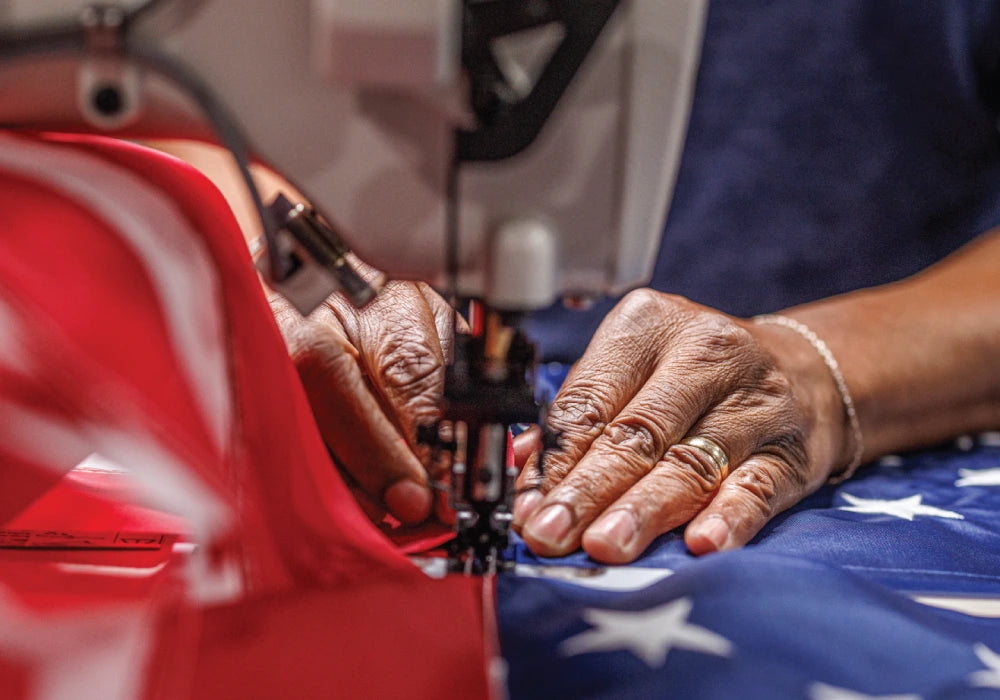When heading out for summer boating adventures, having the correct flags aboard is about purpose. Boat flags help communicate important messages on the water, honor traditions, and reflect your identity. Whether you’re flying a U.S. flag for boats or raising signal flags for a regatta, these colorful banners play vital roles in safety and expression. Flying the appropriate flag can signal distress or identify your nationality. Knowing which flag to fly, when, and where to place it makes every outing smoother and more respectful. A thoughtfully chosen flag set reflects your values while also ensuring compliance with maritime customs and regulations.
Key Features of Premium Boat Flags
Marine-Grade Stitching, Reinforced Headers, and UV-Resistant Dyes
Top-quality flags built for marine use are crafted with durability in mind. Premium boat flags often feature double or quadruple stitching, especially at stress points, to prevent fraying from strong winds. Reinforced headers, typically made with canvas or heavy-duty fabric, provide added strength at the hoist edge. This helps your flag stay securely attached in rough waters. Also, UV-resistant dyes are crucial in preventing fading from prolonged sun exposure. A vibrant flag that holds its color through long summer outings ensures your vessel looks well-maintained, no matter how often you're out on the water.
Comparing Flag Materials
Material choice plays a big role in how your flag performs over time. Traditionalists might favor cotton for its classic texture, though it can absorb moisture and fade more quickly. Polyester blends strike a balance between flexibility and color retention, making them a wise choice for everyday boaters. Spun polyester stands out for those seeking superior longevity. It's thicker and withstands strong winds better than lighter fabrics. Whether you need a marine American flag that endures ocean breezes or a regatta flag that holds its shape on hot days, material matters when you’re shopping for serious gear.

Embroidered Stars vs. Printed Fields
Details can elevate a flag from functional to exceptional. For American flags, one key distinction lies in how the stars and stripes are presented. Printed fields are cost-effective and lighter but may crack or peel with extended exposure. Embroidered stars add a touch of elegance and are stitched to last, creating a textured look appreciated by many boaters. A durable American boat flag with embroidery withstands heavy winds and salt spray while maintaining its crisp appearance from a distance.
Sizing Guidelines
Choosing the right size flag for your boat is also about proportion and etiquette. A flag that's too large can drag or tangle, while one that's too small may seem out of place. The general rule is that the flag’s length should be one inch for every foot of boat length. For example, a 40-foot boat should fly a 40-inch ensign. This guideline applies to various types of flags, ranging from national ensigns to custom designs. Following these measurements ensures your boat flag sets complement your vessel’s design without overwhelming or under-representing it.
Understanding Marine Flag Mounting Hardware
Flagpole Options
Mounting your flag begins with selecting the appropriate pole for your vessel’s setup. Teak staffs offer a classic look and are popular among wooden boat enthusiasts, adding a warm, nautical touch. However, they require regular oiling to resist weathering. Stainless steel whips, on the other hand, offer a more modern appearance and are highly resistant to rust. Then there are rail clamps, which allow you to mount flags on vertical or horizontal rails without permanent changes. A proper boating flag kit typically includes these components, ensuring quick installation on various surfaces.
Swiveling Trucks, Snap Clips, and Anti-Tangle Assemblies
Flag hardware must perform well under changing wind conditions. Swiveling trucks, mounted atop masts or staffs, rotate freely, allowing flags to fly in the direction of the breeze without becoming twisted. Snap clips make it easy to switch out flags when needed and are typically made of stainless steel or nylon to resist corrosion. Anti-tangle assemblies are essential for multi-flag setups or for boats that frequently change course. These components help keep the flag unfurled and neatly aligned, ensuring that your nautical USA flag remains visible no matter where the water takes you.
Installing Flag Mounts
Installing a flag mount shouldn’t require drilling holes or risking scratches. Protecting your boat’s finish while securing a flag is entirely possible with the right gear. Here's how to do it:
- Choose the Right Location: Ideal areas include accessible surfaces such as railings or stern posts. These zones provide sufficient structural support to withstand wind resistance while keeping the flag clear of sails, rigging, and control lines. Be cautious about placing the mount near areas with heavy foot traffic or near moving equipment, as this could compromise the flag’s stability and potentially damage the boat’s surface over time. Evaluate sightlines as well, ensuring the flag won’t obstruct visibility from the helm or interfere with deck operations. A strategic location enhances the flag’s presentation while also preserving boat functionality. Taking a few extra minutes to assess mounting spots can prevent long-term issues and help you showcase your flag with confidence.
- Use Non-Permanent Hardware: Rather than relying on drilled-in brackets or adhesives that may degrade finishes, opt for removable hardware specifically designed for marine use. Clamp-on mounts and heavy-duty suction cups offer secure attachment while preserving the boat’s original surfaces. These non-permanent solutions are ideal for boaters who want the flexibility to relocate or remove the mount without leaving holes or adhesive residue behind. Many clamp-style mounts feature adjustable tension mechanisms that accommodate different rail diameters and hull shapes, allowing for a snug fit without overtightening.
- Add Protective Padding: Even the most well-designed mount can cause micro-abrasions or dents if it sits directly against a gelcoat or painted surface. That’s why it’s essential to insert a layer of protection between the mount and your boat. Rubber, silicone, or neoprene gaskets act as a buffer, reducing pressure points and preventing direct metal-to-surface contact. These materials not only protect against scratching but also absorb some of the vibration and motion that occur while underway. You can purchase mounts that include integrated padding or retrofit your own using cut-to-fit pads.
- Double-Check Mount Stability: Once your mount is in place, take a moment to verify that all fasteners, clamps, or suction mechanisms are secure. Use moderate pressure to tighten hardware. Give the mount a few gentle tugs in multiple directions to simulate wind and motion. The goal is to detect any movement or slippage before you're on the water, where adjustments become harder and risks increase. If you’re using a clamp, make sure it hasn’t shifted during tightening and that it isn’t overtightened to the point of gouging metal or composite surfaces. Confirm that the flagpole itself is firmly seated and won’t come loose when underway.
- Inspect and Maintain the Mount Regularly: Even high-quality mounting systems are susceptible to corrosion, wear, and loosening over time. Set a routine to inspect your flag mount at least once per boating trip. Check for any signs of rust or loosened components, and clean off salt or grime using a damp cloth, followed by a freshwater rinse.
Taking these steps ensures you can fly your flag proudly, using gear that’s secure yet gentle on your vessel.

Night Visibility: Lighting Your Flag to Comply with Maritime Rules
Boaters who plan to cruise or anchor overnight must comply with flag illumination rules. According to maritime guidelines, if a national flag remains hoisted after sunset, it must be properly lit. Small LED fixtures are an easy solution, offering strong visibility without draining your power supply. These lights can be mounted directly to the flagpole or installed on adjacent structures, like arches or masts. Solar-powered options are increasingly popular, especially for eco-conscious boaters. Ensuring proper illumination is not only about visibility—it’s also part of nautical flag protocol, reflecting respect for both the flag and fellow mariners who may be navigating nearby in low light.
Assembling a Complete Boat Flag Set
The U.S. Flag for Boats
Displaying the U.S. flag for boats correctly involves more than simply hoisting it. Proper placement honors maritime traditions and follows established conventions. On powerboats, the ensign should be flown from a staff at the stern, ideally mounted on the transom or deck. Sailboats often display the flag from the leech of the mainsail or a stern-mounted staff when under engine power.
Marine Signal Flags
These flags allow vessels to send messages without electronics. Each flag represents a letter, numeral, or specific command. They're useful during regattas, for signaling course changes, or to indicate emergencies. For example, the "Diver Down" flag alerts nearby boats to steer clear of submerged divers, while a simple "C" might signal “Yes” or agreement in a racing context. These flags are color-coded for visibility and follow internationally recognized patterns. Organized sets often come in rolls or cases, making them easy to deploy quickly when needed. Mastering the use of signal flags adds a functional layer to onboard communication for competitive or safety-conscious mariners.
Nautical Flag Collections
Creating a comprehensive nautical flag collection can be enjoyable. These flags serve a variety of purposes. Here’s what a complete flag collection typically includes:
- 26-letter flags (A-Z): Used to spell out custom messages or vessel names.
- 10 numeral pennants (0-9): Often paired with letter flags for coordinates or regatta scores.
- Three substitute flags: Allow the duplication of letters in a message when one of each is standard.
- Answering pennant: Used to acknowledge messages or instructions from other boats.
- Code/answer flag: Indicates a signal being made is part of the International Code of Signals.
- Storage solution: A durable bag or case to keep the flags organized and ready to deploy.
Displaying a full flag set during ceremonies or boating festivals showcases your dedication to tradition and seafaring communication. It also makes your vessel stand out with an organized appearance.
Courtesy Flags, Holiday Burgees, and Decorative Uses
Courtesy flags are small representations of the host country’s national flag, flown by visiting vessels when entering foreign waters. Placing one on the starboard spreader is standard practice when cruising internationally. Holiday burgees are celebratory and decorative. Whether it’s the Fourth of July or a yacht club anniversary, these flags are a great way to get into the spirit. If you’re planning to buy American boat flags, it’s worth selecting a few extras to rotate during themed weekends or marina celebrations for visual variety.
Boating Flag Etiquette and Seasonal Considerations
Removing Signal Flags
One of the most overlooked rules in marine signaling is the timely removal of flags once their purpose has been fulfilled. Leaving up signal flags after the intended message has been acknowledged can lead to confusion or misinterpretation by other vessels. This is especially critical during regattas or when issuing cautionary alerts. Keeping your signals current shows attentiveness and reinforces your respect for others on the water. It also preserves the credibility of visual communication. When your message has been received and acknowledged, it’s courteous and correct to lower the flag to avoid sending mixed signals to neighboring boats.
Tips for Flags on Yachts vs. Fast Motorboats
Different types of vessels require different flagging approaches. On luxury yachts, flags are often chosen for both style and tradition. Placement and proportions are strictly observed, with the American flag on yachts typically flown from a custom staff mounted at the stern. Fast motorboats, however, need lightweight, aerodynamic flags that resist flapping violently at high speeds. On sailboats, flags must be positioned to avoid interfering with lines and sails.
Celebrating Patriotic Holidays with Modular Flag Kits
Holidays like Independence Day, Memorial Day, and Veterans Day are perfect opportunities to deck your vessel with themed displays. Modular flag kits make it easy to swap in seasonal options or combine multiple flags for festive flair. Many flags for U.S. sailboats are now designed with quick-connect hardware, allowing for fast changes between standard ensigns and celebratory pennants. These kits typically include national flags and signal-style accents that match holiday motifs. Preparing a flag display in advance allows you to join marina parades or casual get-togethers with a patriotic flair, bringing energy to your boating experience.
Maintenance, Storage, and Environmental Responsibility
Cleaning and Drying
Saltwater can be one of the harshest elements your flag will face, especially during extended time at sea. After exposure to salt spray, it’s important to rinse your flag with fresh water to prevent fabric degradation. Even the most resilient marine flags can weaken if salt crystals are left to accumulate in the fibers. Once rinsed, flags should be gently hand-washed using mild soap, avoiding harsh chemicals or bleach that can strip the dye. Hang the flag flat or drape it loosely to dry in a shaded area, ensuring it doesn’t remain bunched up and wet.
Rotating Flags
Displaying the same flag continuously can lead to premature fading and fabric wear, particularly in intense sunlight and coastal wind conditions. One way to maintain a crisp, vibrant look is to rotate your flags on a regular basis. By alternating between two or three options, you can significantly reduce sun damage and stress on any single flag. This method is especially helpful for those who enjoy weekly boating outings or long summer trips. If you’re using a boat flag with a pole attachment system, switching out flags becomes a quick and easy task.

A well-chosen flag set is a symbol of pride and seamless communication on the open water. From vibrant signal flags fluttering in a breeze to a well-lit ensign glowing in the twilight, flags add character to any boat. For those planning to buy American boat flags, investing in quality means your flags will not only look better but also last longer, even under the demands of an active summer. A thoughtfully curated collection enhances your vessel’s presentation and brings a sense of celebration to each outing.






